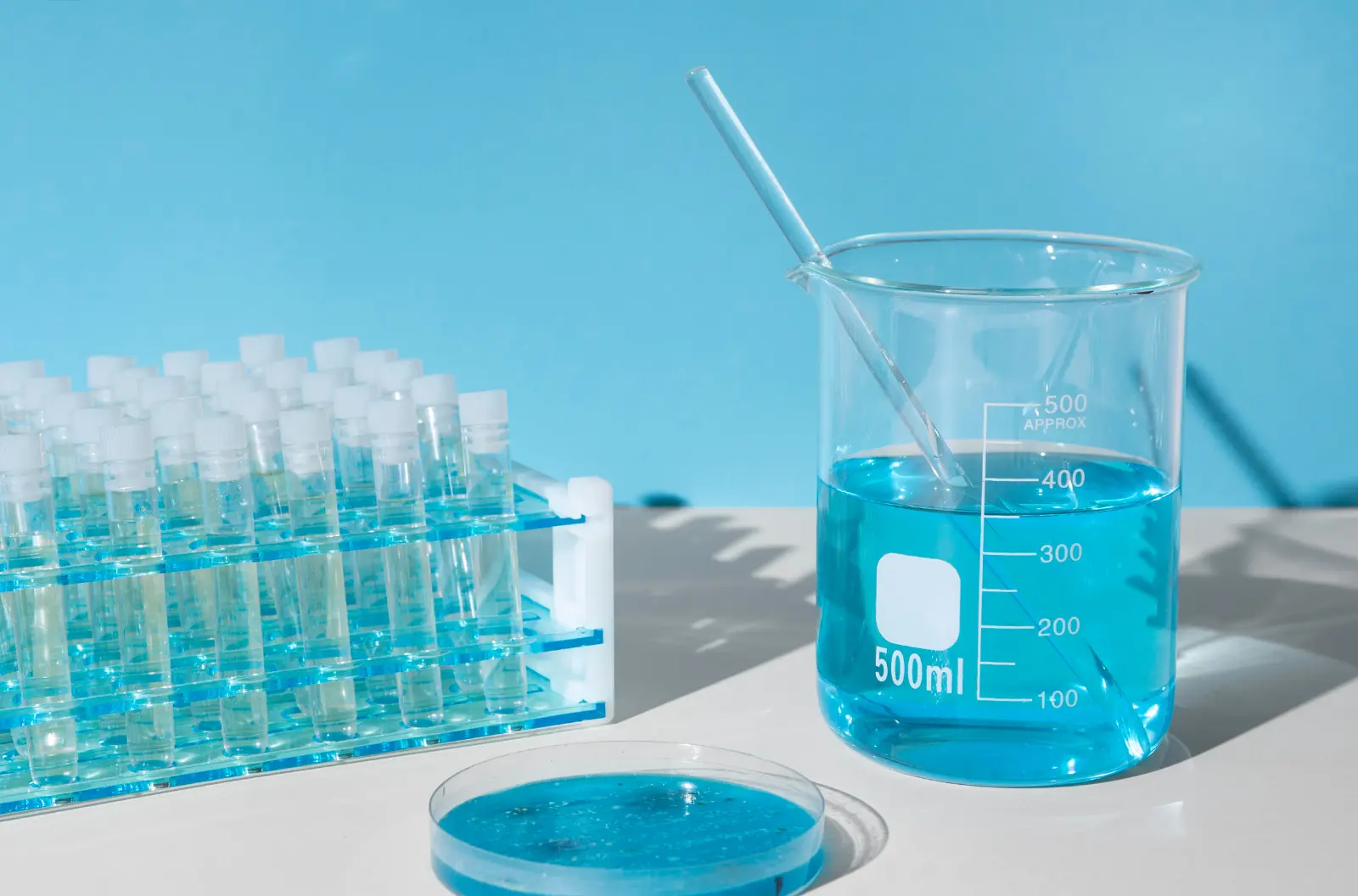TABLE OF CONTENTS
TABLE OF CONTENTS
Acids play a crucial role in various industrial, scientific, and domestic applications. Among them, hydrofluoric acid (HF) and hydrochloric acid (HCl) are widely used, each with unique properties and uses. This article will provide a detailed comparison of these two acids, exploring their definitions, chemical compositions, properties, uses, and safety considerations.
Definition: Hydrofluoric Acid vs Hydrochloric Acid
Hydrofluoric Acid (HF): Hydrofluoric acid is a solution of hydrogen fluoride in water. Despite being a weak acid compared to others, it is highly corrosive and dangerous. Its ability to dissolve glass and other silicates makes it unique and valuable in specific industrial applications.
Hydrochloric Acid (HCl): Hydrochloric acid, also known as muriatic acid, is a strong acid formed by dissolving hydrogen chloride in water. It is highly corrosive and has a wide range of uses in industry, laboratory, and even domestic settings due to its effectiveness in dissolving many substances.
Chemical Composition: Hydrofluoric Acid vs Hydrochloric Acid
Hydrofluoric Acid
Formula: HF
Molecular Weight: 20.01 g/mol
Structure: A hydrogen atom bonded to a fluorine atom. The bond is highly polarized due to the significant difference in electronegativity between hydrogen and fluorine.
Hydrochloric Acid
Formula: HCl
Molecular Weight: 36.46 g/mol
Structure: A hydrogen atom bonded to a chlorine atom. The bond is also polarized, but less so than in HF due to the smaller electronegativity difference between hydrogen and chlorine.
Properties: Hydrofluoric Acid vs Hydrochloric Acid
Hydrofluoric Acid (HF)
Physical State: Hydrofluoric acid is typically encountered as a colorless liquid or gas. It has a sharp, irritating odor that can be detectable even at low concentrations.
Boiling Point: HF has a relatively low boiling point of 19.5°C (67.1°F), making it a gas at slightly elevated temperatures.
Density: The density of hydrofluoric acid is about 1.15 g/cm³ in concentrated form, indicating it is slightly denser than water.
Solubility: HF is highly soluble in water, forming a solution that can vary in concentration. This solution is capable of forming strong hydrogen bonds.
pH: As a weak acid, the pH of hydrofluoric acid solutions can vary but is generally between 1 and 3 for concentrated solutions, indicating its highly acidic nature.
Reactivity: HF is known for its unique ability to react with silicon dioxide (SiO2), a component of glass. This property makes it invaluable for etching glass and cleaning metals. Additionally, HF can react with many metals, forming metal fluorides and liberating hydrogen gas. Its reactivity with organic compounds is significant, as it can penetrate deep into materials and cause severe damage.
Corrosiveness: Hydrofluoric acid is highly corrosive to many substances, including glass, ceramics, and most metals, due to its strong ability to form stable fluorine compounds. This makes it necessary to store HF in plastic containers rather than glass.
Hydrochloric Acid (HCl)
Physical State: Hydrochloric acid is usually encountered as an aqueous solution, which can range from a colorless to slightly yellow liquid. It has a pungent, irritating odor that is easy to recognize.
Boiling Point: The boiling point of HCl gas is -85.05°C (-121.09°F). However, the boiling point of its aqueous solutions varies depending on the concentration. For instance, a 20% solution has a boiling point of about 108°C (226.4°F).
Density: The density of concentrated hydrochloric acid (approximately 37% HCl by weight) is about 1.18 g/cm³, slightly denser than water.
Solubility: HCl is highly soluble in water, dissociating completely to form hydronium ions (H3O+) and chloride ions (Cl-), making it a strong acid.
pH: The pH of hydrochloric acid solutions is very low, typically around 1 or lower for concentrated solutions, indicating its high acidity.
Reactivity: HCl is highly reactive with metals, forming metal chlorides and releasing hydrogen gas. It also reacts with bases to form water and salts in neutralization reactions. HCl can decompose carbonates and bicarbonates, releasing carbon dioxide gas.
Corrosiveness: Hydrochloric acid is highly corrosive, particularly to metals, and can cause significant damage to organic tissues and materials. However, unlike HF, it does not react with glass, which is why it is often stored in glass containers.
Key Differences in Properties
Boiling Point: HF has a much lower boiling point than aqueous HCl solutions, making it more volatile and hazardous to handle at room temperature.
Acid Strength: While both are highly acidic, HCl is a strong acid, meaning it dissociates completely in water, whereas HF is a weak acid with partial dissociation.
Reactivity with Glass: HF uniquely reacts with glass and silicon compounds, making it essential for etching and cleaning applications. HCl, however, does not react with glass.
Storage Considerations: HF requires plastic containers due to its reactivity with glass and many metals, whereas HCl can be stored in glass containers but requires careful handling due to its corrosiveness.
Uses: Hydrofluoric Acid vs Hydrochloric Acid
Hydrofluoric Acid
Glass Etching: HF is used to etch glass and silicon wafers in the semiconductor industry.
Industrial Cleaning: Removes oxides and other impurities from metals.
Chemical Synthesis: Produces fluorinated organic compounds and various inorganic fluorides.
Petroleum Industry: Used in the alkylation process to produce high-octane gasoline.
Hydrochloric Acid (HCl)
pH Control and Neutralization: HCl is widely used to control the pH in various industrial processes. It neutralizes alkaline substances and adjusts the acidity of solutions. This is crucial in industries such as food processing, water treatment, and chemical manufacturing.
Steel Pickling: HCl is extensively used in the pickling of steel. This process removes rust and scale from steel surfaces before further processing like galvanizing or coating. The acid reacts with iron oxides to form soluble iron chlorides.
Reaction: Fe2O3(s)+6HCl(aq)→2FeCl3(aq)+3H2O(l)
Production of Organic Compounds: HCl is essential in the production of organic compounds such as vinyl chloride, which is a precursor to PVC (polyvinyl chloride). It also plays a role in the production of other chemicals like dichloroethane and trichloroethylene.
Household Cleaning and Descaling: HCl is a common component in household cleaners and descalers. It effectively removes limescale, rust, and other deposits from surfaces and fixtures, making it valuable for maintaining cleanliness in kitchens and bathrooms.
Food Processing: In the food industry, HCl is used to produce gelatin and as a food additive to regulate acidity. It also aids in the processing of corn syrup and the purification of sugar.
Laboratory Reagent: HCl is a standard reagent in laboratories for various chemical reactions, including titrations to determine the concentration of basic solutions. It is also used to prepare and clean glassware and other equipment.
Oil Well Acidizing: In the oil and gas industry, HCl is used in a process called acidizing. It is pumped into oil wells to dissolve carbonate minerals and improve the flow of oil or gas from the reservoir. This increases the efficiency and productivity of the wells.
Water Treatment: HCl is used in water treatment processes to adjust the pH of drinking water and wastewater. It helps neutralize alkaline substances and ensure the proper chemical balance necessary for safe water.
Key Differences in Uses
Specialized Applications: HF has niche applications, such as glass etching and semiconductor manufacturing, due to its unique reactivity with silica and silicon. HCl, on the other hand, is more versatile and has broader applications across various industries.
Industrial Processes: Both acids play crucial roles in industrial processes, but their specific applications vary significantly. HF’s use in fluorine compound production and nuclear industry highlights its specialized nature, while HCl’s use in steel pickling and pH control shows its broader industrial utility.
Household vs Industrial Use: HCl’s presence in household cleaners and food processing underscores its relative accessibility and safety when used properly, whereas HF’s applications are predominantly industrial due to its hazardous nature.
Safety: Hydrofluoric Acid vs Hydrochloric Acid
Hydrofluoric Acid
Health Hazards: Extremely dangerous, causing severe burns and deep tissue damage. Can penetrate skin and damage bones and organs.
Handling Precautions: Requires specialized equipment and stringent safety protocols. Immediate medical attention is necessary in case of exposure.
Environmental Impact: Highly toxic to the environment, particularly aquatic life.
Hydrochloric Acid
Health Hazards: Corrosive, causing burns on contact with skin and mucous membranes. Inhalation of fumes can cause respiratory issues.
Handling Precautions: Standard acid-handling procedures are sufficient, but proper protective gear is necessary.
Environmental Impact: Can cause environmental damage, particularly to water bodies, if not handled and disposed of properly.
Reactivity and Applications: Hydrofluoric Acid vs Hydrochloric Acid
Hydrofluoric acid’s unique ability to dissolve silicates makes it indispensable in the glass and electronics industries. Its high reactivity with silicon compounds is unmatched. On the other hand, hydrochloric acid’s strong acidic nature makes it a versatile reagent for a broad spectrum of industrial applications, from metal processing to food manufacturing.
Industrial Significance: Hydrofluoric Acid vs Hydrochloric Acid
Hydrofluoric acid’s role in petroleum refining, particularly in alkylation units, underscores its industrial importance. This process is crucial for producing high-octane gasoline, which powers modern engines efficiently. Hydrochloric acid, with its wide range of applications, from pH regulation to chemical synthesis, plays a fundamental role in maintaining the operational efficiency of various industries.
Safety and Handling: Hydrofluoric Acid vs Hydrochloric Acid
The handling of hydrofluoric acid necessitates stringent safety measures due to its ability to cause severe chemical burns and systemic toxicity. In contrast, while hydrochloric acid is also dangerous, its risks are relatively more manageable with standard safety protocols. However, both acids require respect and caution in their handling to prevent accidents and injuries.
Conclusion
Both hydrofluoric acid and hydrochloric acid are vital in various industries due to their unique properties and uses. Hydrofluoric acid’s ability to dissolve glass and its application in the semiconductor industry make it invaluable, despite its high risks. Hydrochloric acid’s widespread use in pH control, steel pickling, and cleaning demonstrates its versatility. Understanding the differences in their chemical composition, properties, uses, and safety measures is crucial for their effective and safe application.
Contact Us
Questions or looking for a quote?





